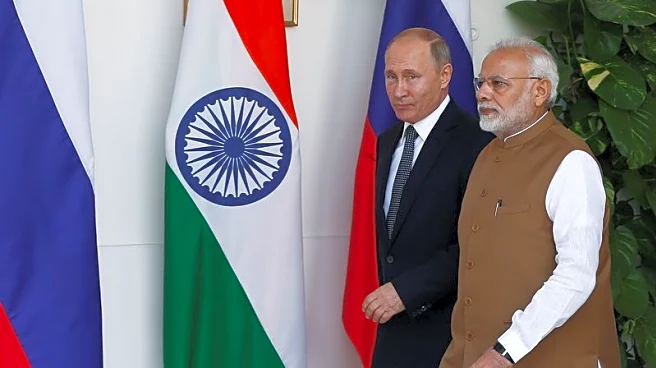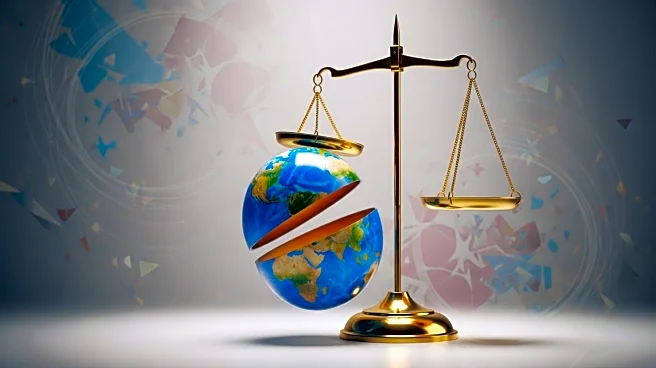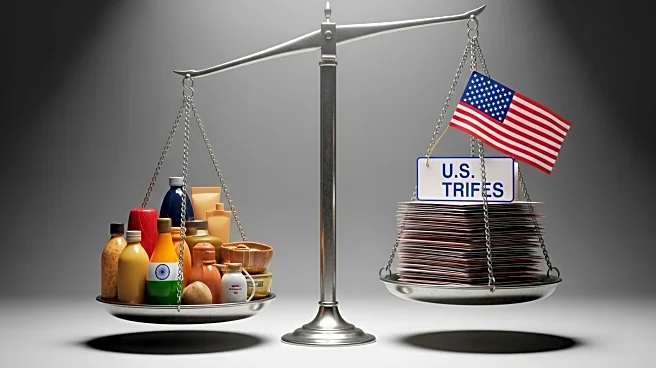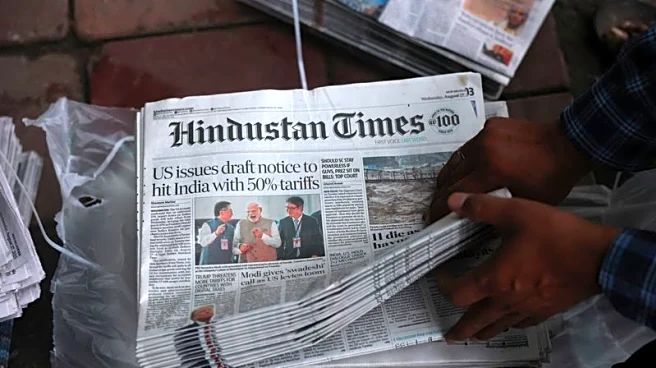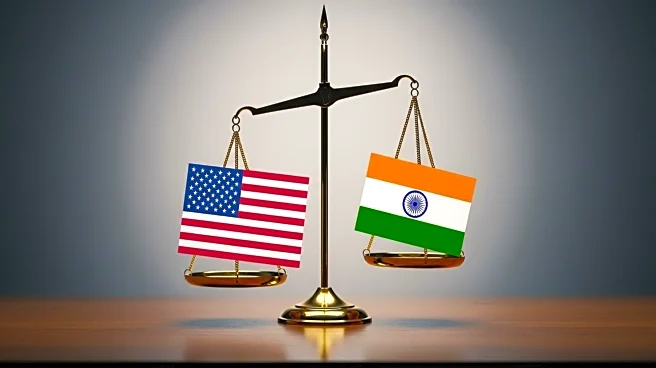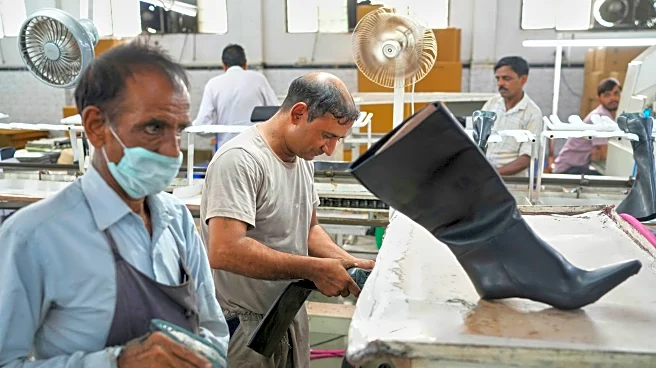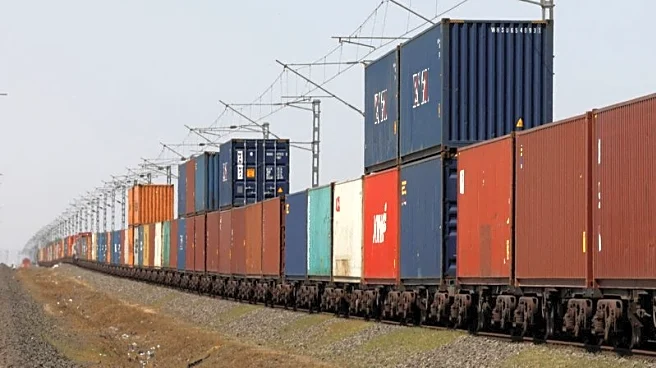What's Happening?
President Trump has implemented a 50% tariff on goods from India, escalating trade tensions due to India's purchase of Russian oil. This tariff doubles the previous 25% duty, affecting various sectors including garments, gems, jewelry, and chemicals. Despite five rounds of trade discussions since April, differences over agricultural and dairy market access and India's Russian oil purchases have stalled negotiations. The tariffs pose a threat to small exporters and jobs in India, prompting the Indian government to consider financial assistance and market diversification strategies.
Why It's Important?
The increased tariffs could strain economic relations between the U.S. and India, impacting bilateral trade and strategic partnerships. The move may lead to higher costs for U.S. consumers and businesses relying on Indian imports. It also reflects broader geopolitical tensions involving Russia, as the U.S. seeks to pressure countries trading with Moscow. The tariffs could influence global trade dynamics, prompting India to strengthen ties with other markets such as China and the Middle East.
What's Next?
India may seek to negotiate with the U.S. for a review of the tariffs, while exploring alternative markets to mitigate economic impacts. The situation could lead to further diplomatic engagements or retaliatory measures. The U.S. administration might face domestic and international pressure to reconsider its trade policies, especially if economic repercussions become significant.


